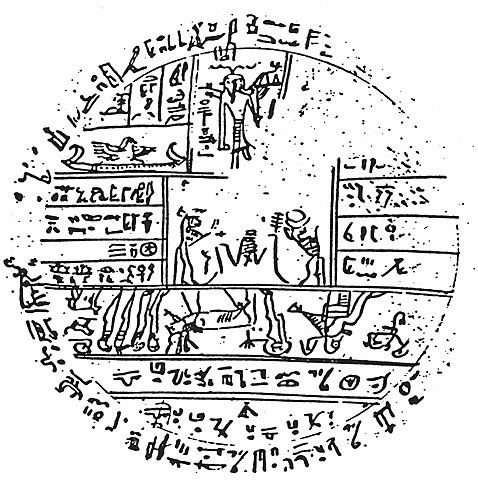 | ||
Similar Book of Abraham, Books of Breathing, The message of the Josep, By His Own Hand Upon Papyrus, Abraham in Egypt | ||
Kirtland egyptian papers chris smith wade englund mike ash brian hauglid david bokovoy
The Kirtland Egyptian papers (KEP) are a collection of documents related to the Book of Abraham during the Kirtland period of early Mormonism (early to mid-1830s). The papers include an "Egyptian Alphabet and Grammar" written in the hand of Joseph Smith, Jr., and other ostensible Egyptian language materials and early manuscript versions of the Book of Abraham in the handwriting of Oliver Cowdery, W. W. Phelps, Warren Parish, Willard Richards, and Frederick G. Williams.
Contents
- Kirtland egyptian papers chris smith wade englund mike ash brian hauglid david bokovoy
- Content
- Publication
- Authorship controversy
- References
The papers have been a source of controversy, because according to Egyptologists they show a lack of understanding of the Egyptian language, and cast doubt on the Book of Abraham as a literal translation of the Joseph Smith Papyri. Mormon scholars have argued that many of the papers may have been produced by Joseph Smith's scribes without his involvement, and that they may have been intended as a speculative or naturalistic effort rather than a product of revelation.
Content
The Kirtland Egyptian papers are housed in the newly constructed Church History Library of The Church of Jesus Christ of Latter-day Saints (LDS Church), along with over a dozen other documents produced ca. 1835 and 1842 in Kirtland, Ohio, and Nauvoo, Illinois. Due to controversy about the order of production, there is no generally accepted manuscript numbering scheme. The numbers reported below refer to the folder numbers under which the manuscripts are catalogued in the Church archives. These folder numbers were assigned by Hugh Nibley ca. 1971. Although they were intended to reflect the order of production, there is general agreement today that the manuscripts were not produced in exactly this order.
Publication
The LDS Church has been accused of suppressing the Kirtland Egyptian Papers because they were considered potentially damaging to the credibility of Joseph Smith, Jr. as a prophet. The Papers have been in the Church Historian and Recorder's vault in Salt Lake City since 1855, and there are indications that the Church Historians have been aware of the documents' whereabouts since 1908. Their existence was denied until 1935, when James R. Clark and Sidney B. Sperry were informed that they were in the vault. Even then, Clark and Sperry were not permitted to inform the public about the discovery until some time thereafter. When the documents' existence was finally revealed, Clark stated that he did not believe the Alphabet and Grammar should be submitted to scholars. He preferred to "depend on our testimonies of the gospel."
Jerald and Sandra Tanner, critics of the Church, obtained an unauthorized copy of a microfilm strip containing images of the documents in 1966, and published them as Joseph Smith's Egyptian Alphabet & Grammar. This publication was criticized in a BYU Studies article by Hugh Nibley in 1971 because it did not contain all of the manuscripts, and included no critical apparatus to aid readers in distinguishing one manuscript from another. Nibley's article included images of ten of the manuscript pages. The Tanner publication was revised and updated by H. Michael Marquardt in 1981. Marquardt added a critical apparatus and some interpretive material. A new critical edition of the Book of Abraham manuscripts by Brian M. Hauglid appeared in 2011, with a second volume planned to publish the remainder of the KEP.
Authorship controversy
Egyptologist I. E. S. Edwards stated that the Egyptian Alphabet and Grammar was "largely a piece of imagination and lacking in any kind of scientific value." Hugh Nibley commented that the Grammar was "of no practical value whatever."
In 1968, Jay Todd suggested that the Grammar may have been reverse-engineered from an inspired Book of Abraham translation. In 1971, Hugh Nibley expanded on Todd's argument, explaining that the Alphabet and Grammar materials were largely an uninspired production of Joseph Smith's scribes, who had turned against him and were working independently of him at the time. This view is also accepted by John Gee. Samuel M. Brown has argued for a slightly more nuanced version of this view, attributing to W. W. Phelps a "major" role in authoring the Alphabet and Grammar, while at the same time conceding that the project was carried on under Smith's direction. Brown asserts that it is "unlikely, though not impossible, that the Grammar was actively used in producing the Book of Abraham."
In 1970, Richard P. Howard proposed the opposite view: that the Alphabet and Grammar was the modus operandi of the Book of Abraham's translation. Edward H. Ashment has also adopted this view, arguing against Nibley that the scribes of the KEP were all loyal to and in good standing with Joseph Smith at the time the manuscripts were produced. More recently, Christopher C. Smith has argued at some length that Joseph Smith was the primary author of the Alphabet and Grammar documents, and that those documents served as the source or modus operandi for the translation of at least the first three verses of the Book of Abraham. According to Smith, "This undoubtedly accounts for the choppiness and redundancy of these three verses, which stylistically are very different from the remainder of the Book of Abraham. Verse 3, for example, reads as though it has been cobbled together from a series of dictionary entries."
